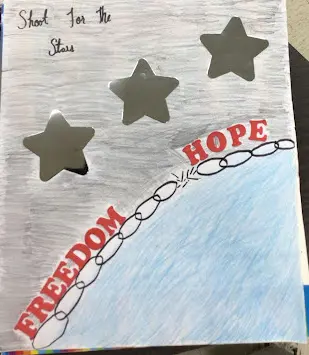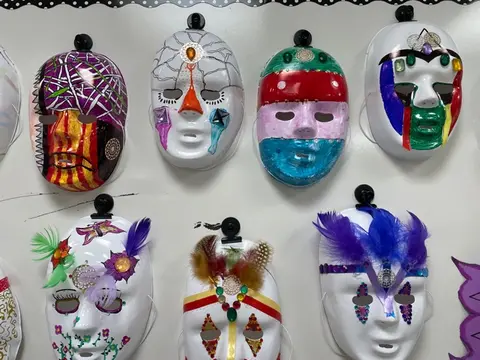Pulitzer Center Update November 5, 2021
Teaching the '1619' Books: Pilot Program Reflects Multi-disciplinary Engagement
In fall 2021, more than 25 professors and K-12 teachers from 17 states and Washington, D.C. participated in the Penguin Random House-Pulitzer Center 1619 Project pilot program for educators, gaining early access to two books that have grown out of the original magazine project: The 1619 Project: A New Origin Story and The 1619 Project: Born on the Water. The 1619 Project, inaugurated with a special issue of The New York Times Magazine in August 2019, is an ongoing initiative from the magazine that aims to reframe U.S. history by placing the consequences of slavery and the contributions of Black Americans at the very center of our national narrative.

The 1619 Project: A New Origin Story is a dramatic expansion of the groundbreaking journalism in The New York Times Magazine’s 1619 Project issue. The book weaves together 19 essays and 36 creative works that illuminate key moments of origin, oppression, resistance, and innovation. Born on the Water is a picture book written in lyrical verse that provides a pathway for readers of all ages to reflect on the origins of American identity by chronicling the consequences of slavery and the history of Black resistance in the United States. For more information on how to purchase both books, and for access to guides designed by educators and Pulitzer Center staff outlining methods for integrating the books to support K-12 courses, click here.
As part of the pilot program, participating teachers and professors explored ways that the books could support their diverse courses and curricula. Participants connected with writers and editors for both books; many went on to develop and teach standards-aligned lesson plans that integrated one or both of the texts. Elementary and high school students processed connections to Born on the Water by creating original masks, quilts, and poetry. Middle and high school students evaluated themes and details from The 1619 Project: A New Origin Story through analytical writing, research, and debate. Students in university-level education programs used both texts to build background knowledge and evaluate techniques for applying the texts to the teaching of reading and history. Projects produced as part of the pilot program reflected the many ways that both texts can inspire students to think critically, make curricular and personal connections, and express themselves.

“The 1619 Project: A New Origin Story is brilliantly written and is absolutely perfect for my students because it helped provide them with the necessary content knowledge about the origin of slavery in the United States, but it also explores the legacy of slavery and its connection to present-day institutions,” Amanda Vickery, associate professor of social studies and anti-racist education at the University of North Texas, said when asked about her experience with the pilot program.
“This book is changing the way I approach the stories I want to share with my students,” educator Taunya Robinson wrote in a reflection about her experience introducing her AP U.S. history students in San Diego, California. “The opening poem by [Langston] Hughes immediately pulls readers in and then you just see students start to deep dive into all the personal accounts and images of voices that have long been suppressed. I have a hard time not getting moved every time I pick up the book.”

“I intend to use the book in teaching our next unit in social studies titled ‘Three Worlds Meet,’” said Gerri Barnauskas, a fifth-grade teacher in Redford, Michigan. “The unit features an overview of West Africa and the world future enslaved people came from: a world of families and rich culture and heritage. I believe Born on the Water reinforces this truth that has often not been taught: looking at the origin stories, the tremendous strength, and the humanity of the enslaved.”
While many participants in the pilot program are still in the process of developing and sharing lesson plans supported by A New Origin Story and Born on the Water, several wrote to share reflections and teaching tips based on their engagements with the texts so far.
Click here for a glimpse at how educators working with grades three-12 used the books this fall.
The Pulitzer Center will work with pilot program participants, and the 40-plus teams of educators who compose The 1619 Project Education Network, to continue sharing lessons connected to the books, essays, audio stories, and additional resources that are part of The 1619 Project. For the latest resources from the K-12 education team and our community of educators, sign up for our weekly newsletter. For additional support connecting The 1619 Project to your classes, email [email protected]





